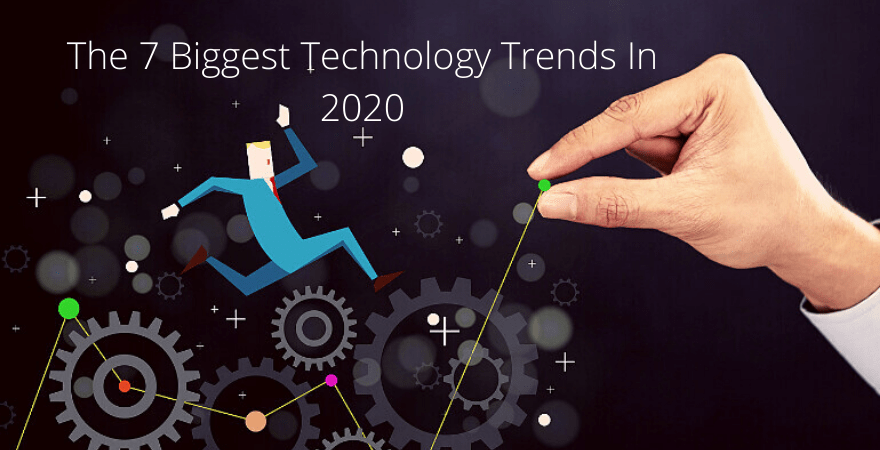The Role of Technology in Business: Examples of Ways It’s Changing the Workplace
Almost half of all businesses plan on increasing their technology expenditures in 2020. The reason being that many have identified tech as the most efficient way to get out ahead of the competition and ultimately, boost profits.
If you’re a business owner that’s looking to make key technological investments, you may find yourself quickly overwhelmed by all of the options you have.
“Which technology in business investments make the biggest impact?” “Where would I be best served to invest my limited capital?”
These are questions we hear all the time as owners of small, medium, and even large companies fumble through how technology is being applied to today’s marketplace and what that could mean for them. To help bring some clarity to your technology questions, below, we walk you through key ways technology is being integrated into company settings in hopes of inspiring you!
1. Improving Accountability
Whether you mean to or not, it can be easy to get complacent when you’re working 5 days a week, 8 hours per day. That complacency often leads to falling behind on projects and costly overtime requests.
As a business owner, it behooves you to know how efficient your team is being and where improvements need to be made. Companies are investing in tools like time tracking software that can analyze employee’s activities throughout a shift and share detailed reports on what’s working and what isn’t.
These reports are instrumental in determining who needs assistance staying on task and who is providing the most value to your organization.
2. Enabling Collaboration
Business success rarely emanates from a single individual. Success almost always comes from a collective of talent that has been assembled and allowed to work together to do incredible things.
Technology in business has made that kind of special collaboration much easier over the last decade.
Several cloud-based applications let employees work on the same files at the same time. Furthermore, sharing files has become as easy as directing team members to a communal “share folder”.
That has eliminated the need to email attachments and manually track updates.
3. Keeping Data Safe
Imagine if all of your company’s key documents, intellectual property data, and customer information were saved on a single computer. Now, imagine that computer was destroyed in a fire.
How would your company recover?
For many, that question is one they’d prefer not to answer and as such, they’ve invested in technology that automatically backs up their systems to on-site and off-site servers. Today’s best backup technology automatically runs backups across all of your company’s machines so team members don’t have to bother with engaging backup mechanisms manually.
4. Getting Paid Made Easy
Sending out invoices can be a hassle. A lot of that hassle comes from having to manually itemize charges in a template, emailing that template to clients, and hoping to receive a response.
Today, companies can integrate with bookkeeping software that lets them invoice straight from within the application. Those invoices are pre-generated per charges you enter into the system and can be tracked to see when they’ve been opened.
Even better is the fact that clients can pay your invoices with their credit/bank cards straight from your digital invoice!
5. Paying the Government Made Easier
No matter how much technology you throw at filing taxes, managing that task is likely to remain a headache. Still, technology has made accurately filling out and filing taxes more streamlined.
Technology in business has integrated bookkeeping and tax filing solutions into all in one systems. That has allowed businesses to use tools like a receipt scanner to automatically track expenses and deduct those expenses from tax documents as well as manage other typically time-consuming tasks.
Even filing your taxes with federal and state authorities can be as simple as pushing “send!”
6. Breaking Down Commerce Barriers
Brick-and-mortar operations used to be limited to selling to people in their immediate vicinity. That’s no longer the case!
eCommerce makes it so even the smallest of businesses can develop a robust online presence and sell to customers all over the globe.
That reality is becoming increasingly important to a company’s bottom line as competition gets to be more global and local consumer saturation starts to be a problem.
7. Engaging Customers Like Never Before
Imagine a world where you’re able to market to a customer based on what they purchase, where they live, and their spending habits? This kind of customized, high conversion marketing is 100 percent a reality.
Over 60 percent of the customers you engage expect personalization to be part of their shopping experience. By investing in technology that enables that end, you’ll meet expectations. You’ll also give yourself a great chance of heightening consumer engagement.
8. Your Office Everywhere
Never before has being able to access your office remotely been more important. Several tools that allow chatting, file sharing, accessing desktops remotely, and more work together to make your office available to your team members no matter where in the world they are.
If you want your company to make it through today’s challenges and tomorrow’s, you’d be well served to have an excellent work from home plan in place. That plan should be powered by cutting edge digital tools.
Technology in Business Defines Success
Companies that embrace technology in business give themselves a much better opportunity of growing and surviving adversity. Keep that in mind as you juggle what your technology budget might look like this year and beyond.
Technology solutions are in a constant state of evolution. Feel free to keep up to date on all things new by browsing the content available on our blog!








